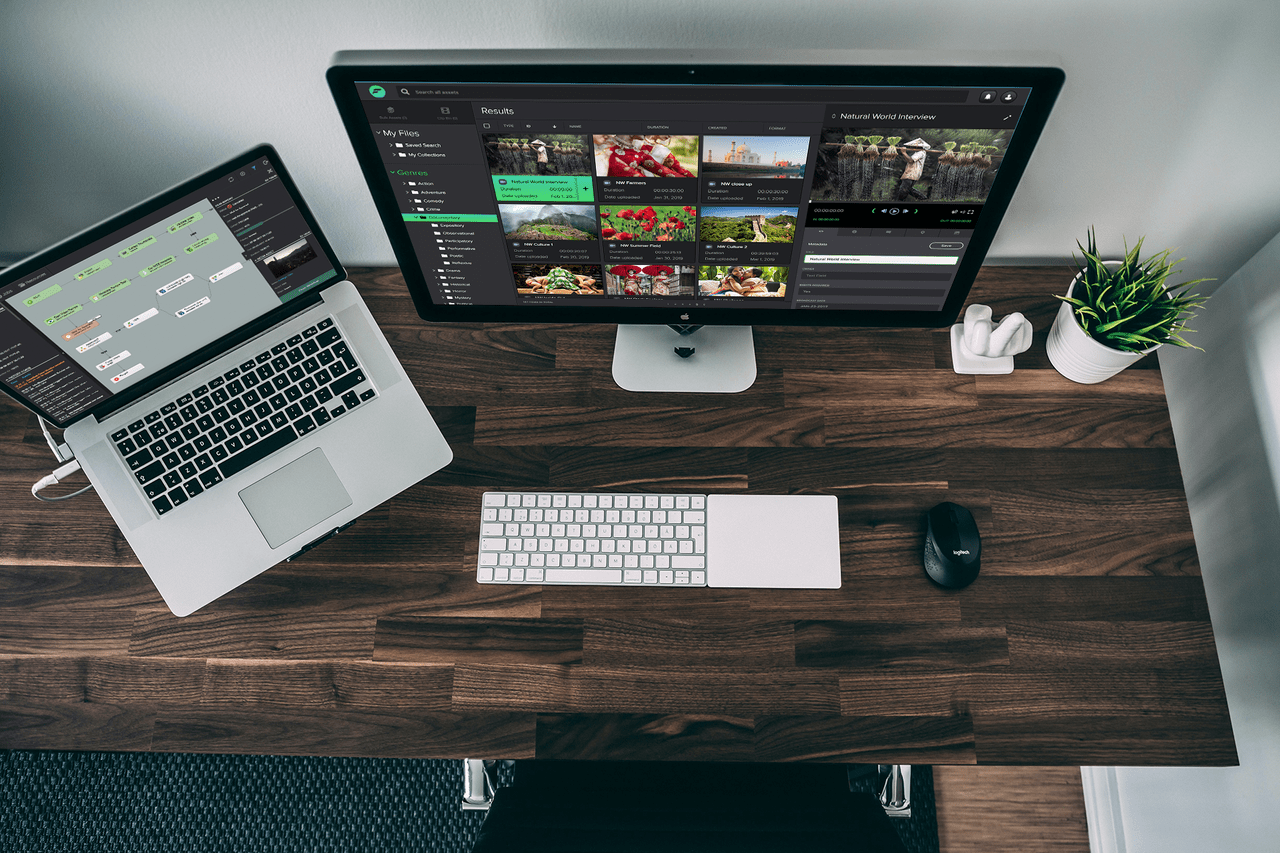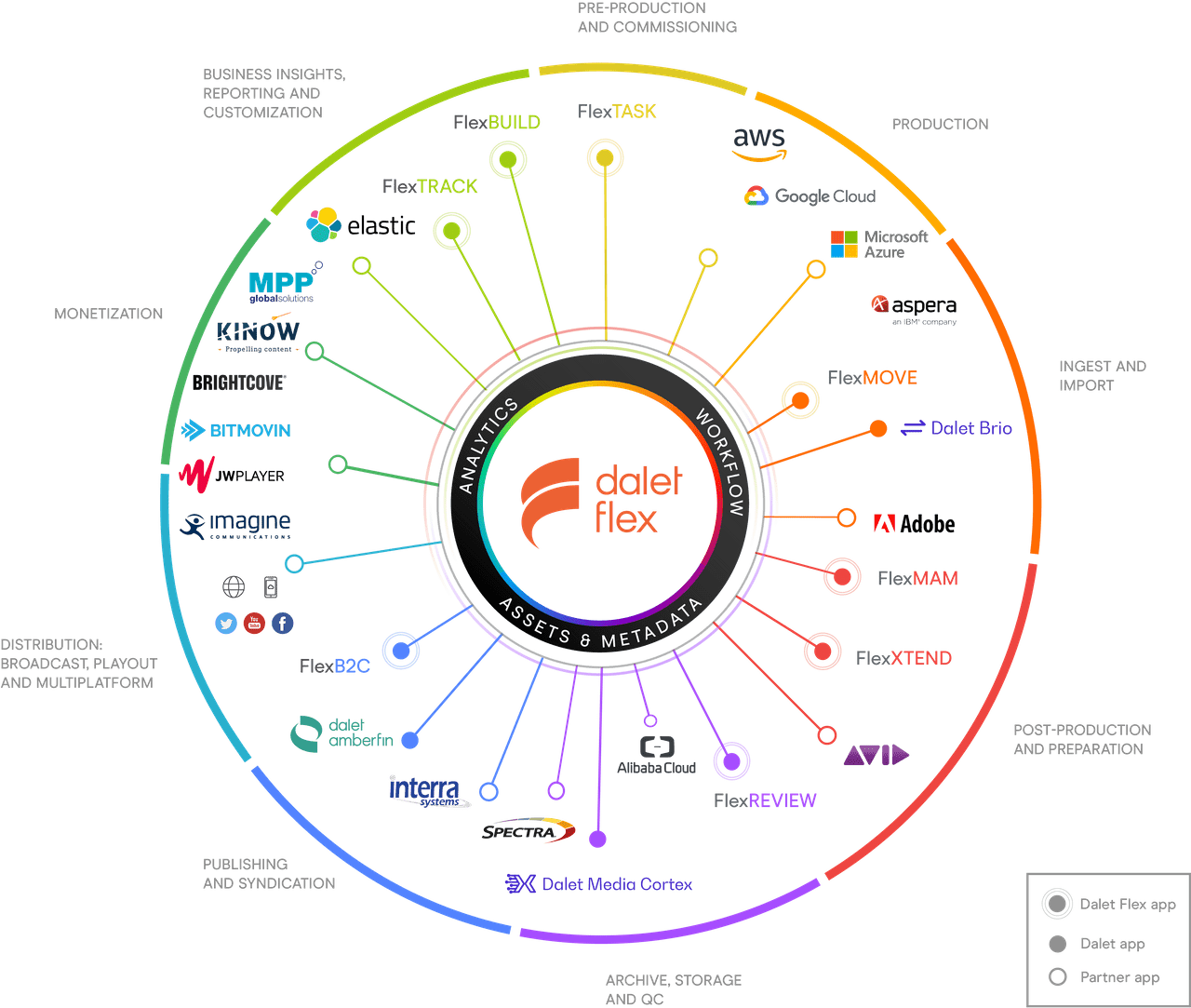Contents
With the growing demand for multimedia content, changes are needed in the way video is produced, managed and distributed. Video Asset Management makes media production and distribution more efficient and more adaptable to meet the evolving demands of the global marketplace. Here’s how to get started!
Chapter 1: Analyzing the Industry
Chapter 2: Organizing Content & Streamlining Workflows
Chapter 3: Importance of Metadata
Chapter 4: Creating a Collaborative Operations
Chapter 5: Tools to help you master Video Asset Management
Analyzing the Industry
It is a well-known axiom in the media industry that content is king; and to those offering the best content will retain the keys to the castle. Those creating the best content will continuously and consistently attract audiences, and therefore have the best chance at long-term success. Simply look at HBO who began this trend with The Sopranos and continued to do so with such offerings as Game of Thrones and Westworld. With the video landscape now extending across digital platforms raging from wide screen LCD TVs to handheld devices, the need for content has become even more imperative as it is everywhere — on every screen, around the world, at every minute of the day.
If there is any question if new, original content is worth the investment, consider that annually, Netflix now spends $8 billion on original and acquired content, HBO spends $2 billion, and Facebook and Apple both spend around $1 billion. This demand for original content is hardly reserved for the entertainment industry. Take Red Bull as an example: an energy drink company that has achieved incredible success with their own media productions, elevating the brand well beyond “energy drink production” to a symbol of living life on the edge. The same could be said for Patagonia, a store known for clothing but turning their success as a business into a platform for environmental action and advocacy through film. Then there is NASA, their content archive a treasure trove of flight and space exploration. Truly, the media amassed over seventy years of science is stellar, and the public never tire of consuming the content coming from Mission Control.
While billions are being spent on creating original content, most content providers don’t have multi-billion-dollar budgets to produce or acquire a level of programming needed to attract and keep audiences. Productions need to be more strategic, and creators must manage their content in order to make the most of their video investments and stay in the game. In this dynamic content environment, Video Asset Management is vital to survival.

Video Asset Management: Organizing Content & Streamlining Workflows
Exactly what is VAM, or Video Asset Management? When you create multimedia content of any kind, you need assets — video files, audio files, support graphics, and other elements that support your production. In order to keep everything organized, you need Video Asset Management, a comprehensive strategy providing storage, organization, distribution and archiving. Reliable Video Asset Management goes even further, offering advanced metadata and workflow management for all your multimedia projects.
Intelligent workflows can incorporate automated business logic and user-defined rules to determine how an asset is treated during production. Media Logistics platforms can automatically detect and validate files during this process and then orchestrate their formatting and delivery. An example of this would be if a syndication partner requests all the content a studio can provide, but only if it meets certain technical criteria and contains all mandatory metadata. If your Video Asset management system is manual, sorting out content meeting these criteria would be incredibly time-consuming.
For example, the Dalet Flex platform does this to avoid any potential issues and possible bottlenecks. Once a distributor’s packaging and managing profile is built, the syndication of assets including multiple audio tracks, subtitles, or images, and their corresponding data to multiple places is streamlined in a workflow that truly helps you create content — whether it is your own content or content for syndication — on demand and optimized for a variety of platforms. These workflows would be tedious and cumbersome unless metadata and other details determined by the user can be assigned during the media’s import into projects. Reliable Video Asset Management can automatically convert your content into required formats, assign assets with relevant metadata for both editing or archiving, or repackage them with the original elements. The best format for each distributor’s channel can be automatically generated, at the highest quality, lowest cost, and fastest delivery time.
Ultimately, this kind of strategy helps ensure tasks are completed successfully and video assets and their metadata end up where (and how) they need to be as quickly as possible. But what is it about metadata that makes it so important? When investing in Video Asset Management, why is automation of metadata so essential?

Metadata? Video Asset Management’s Ultimate Superpower!
You hear it mentioned often when it comes to building a library of media, creating an optimized Video Asset Management system, or when working remotely with a production team. What exactly is metadata, and why is it so important to the success of your VAM?
When putting together workflows best suited for you and your production team, it is essential to come up with a system and a strategy that takes the effort of organizing and cataloging your footage easily for everyone involved. This is where a Video Asset Management platform earns its place in your media production process. A VAM platform should offer advanced metadata capabilities in an easy-to-use interface. Reliable VAM platforms make integration into your workflows and sharing search terms between various media assets effortless.
Metadata is specific information embedded directly into a media asset or can be associated with assets as separate data files. This specific information pertains directly to the content of the media asset, ranging from specific keywords associated with the content, timestamps, closed captioning, audio languages, and other aspects of your project. Its creation, assignment, and management had once been regarded as one of those tasks that used to be manually driven, akin to managing budget spreadsheets, or re-entering metadata manually when sharing media between producers, or updating scripts in pre-production and pushing them into production systems. Video Asset Management platforms, like Dalet Flex, can now automate this, saving time, cost, and potential for human error.
Metadata is entered once and then carried across each asset, platform to platform. Depending on the ecosystem you can create, the metadata should carry across a variety of systems, whether the applications you have implemented are provided by the same vendor or not. Dalet Flex includes partner integrations where metadata can be shared, such as multimedia editing tools and with A.I.-driven cognitive service applications that tags various media through such details as facial recognition, object tagging, and audio transcription. Video Asset Management systems harness metadata to perform focused asset searches within applications and archives, and transform them into productive, targeted and monetizable content for engaged consumer audiences.

A good case study highlighting the importance of metadata in a reliable Video Asset Management strategy is the National Rugby League of Australia (NRL). The organization has been continuing its investment into content creation and media production, and their success is seen by how passionately their fans are demanding more of their content. As a result, they have established themselves as a leading sports media and digital technology business. The NRL now delivers engaging content to fans much faster across various platforms (Internet, mobile apps, and social media) while continuing to manage a complex network of asset sources including broadcasters, other rugby clubs, production partners, each with different rules and workflows. The NRL was looking for technology to manage workflows better and to automate production tasks so that its team could focus on creating and curating high-earning content. The NRL also wanted to eliminate duplication around metadata and user permissions, allowing each team member access, specifically and exclusively, to the information to which they are entitled.
NRL found their solution by building a reliable, efficient video asset management platform implementing media logistics that addresses all these challenges and automate asset ingest and distribution. The implementation of a VAM frees up the production team to work on creative and high-value tasks.

When content is published whether it is to a Video-On-Demand portal, a social media platform, or some other delivery service, specific metadata fields, ranging from celebrity names to special events to more general keywords or technical information associated with the content, are also leveraged. Along with aiding in search terms and “Other media you would be interested in…” suggestions, monetization opportunities are added in this automated chain by looking at metadata and creating tailored pre-roll ads based on metadata associated with the media. Dalet Flex sends media through an automated workflow from import through to distribution. Harnessing third-party services compatible with Dalet Flex, the media logistics platform analyzes a variety of metadata elements associated with cataloged assets in order to optimize the search process as well as monetize the media itself. All this information is then automatically logged as timecode-based metadata as part of the asset within the media logistics platform for future consumption.
Metadata, its management and implementation, is essential in building a successful Video Asset Management solution for you, your team, and the wider organization.
So Happy Together: Creating a Collaborative Operation!
When implementing your Video Asset Management platform, collaboration on projects immediately improves (as well as your productivity) based on how easy internal teams, external partners, and systems seamlessly integrate—whether separated by an office, a country, or — in the case of 2020 — a pandemic.
Finishing a single piece of content can require a vast number of elements and stages being tracked and managed by a variety of team members. As seen during the many COVID-19 lockdowns of 2020, these workflows can be automated, starting at the earliest stages of content development, commissioning, and pre-production. During physical production and continuing through to post-production, reviews and approval processes managed by Dalet Flex can help in avoiding communication breakdowns, thereby helping to complete projects faster—even if they require input from various teams. Crew members can shift to higher-value activities such as developing new content, leaving software-defined tools to handle the rest. Companies can take advantage of this Video Asset Management strategy to complete more projects, scale their existing video investments, and adapt far more quickly to the inevitable changes to come in production processes and media partner requirements.
Taking the Next Steps Forward
As media-rich organizations move more towards cloud-based operations and virtual offices, the benefits of this Video Asset Management approach with Dalet Flex are enhanced. Our platform simplifies, streamlines, and connects the entire content supply chain to help teams:
- plan and manage
- produce and package
- curate and archive
- orchestrate and automate
- distribute and publish
- analyze and monetize
Dalet Flex supports companies and creative teams whether they work in one area or across all and can be customized to meet specific needs. With an integrated content supply chain ecosystem, content creators can now automate processes for metadata, cataloging, Video Asset Management, and other tasks that run within these operations to create and deliver the robust and targeted content that audiences actively look for.
The demand for multimedia content will only continue to expand. So will the demands for producing even more great content at the lowest possible cost and in the shortest time frame, whether it is for news broadcasters, media & entertainment companies, sports teams, leagues and federations, brands, corporations and any other media-rich organizations. Video Asset Management coupled to workflow and process automation, in whatever form it takes, promises to be a key factor in separating successful content providers from the rest, setting a higher standard for productivity.

Featured in: Collaboration | Dalet Flex | Media Workflows | Metadata | Multimedia Content | Multimedia Production | Video Asset Management |
Tee Morris brings three decades of audio, video, and print experience to Dalet. His passion for digital media and content creation led him to writing several best-selling titles including Podcasting for Dummies, Twitch for Dummies, and Discord for Dummies. When he's off the clock, Tee writes science fiction and fantasy, and unwinds with a video game or two.
More Articles By Tee




A good resource!
Hi Girma, glad you enjoyed this article. If you need any further information on Video Asset Management, feel free to contact us. We are happy to help!